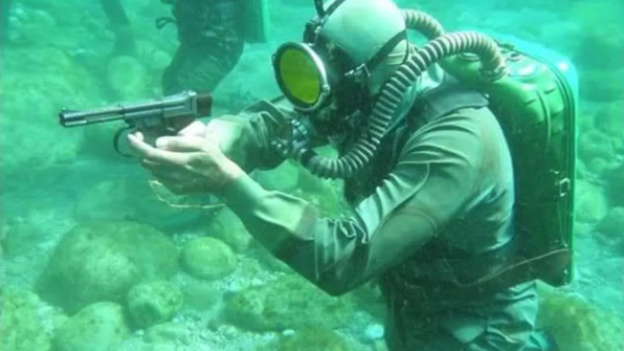 source
source
Outside of B movies written by people with a poor grasp of physics, you?re never going to see a gun shoot further than perhaps ten or twenty feet underwater. Right? Wrong, surprisingly. The problem of how to arm Navy frogmen was in fact solved during the 1960s by both Americans and the Soviets.
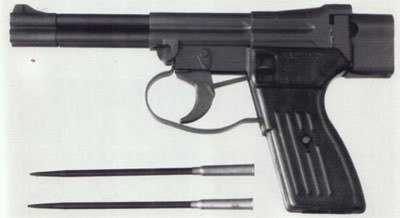 source
source
Filling in the niche of an underwater handgun for use by divers protecting US maritime assets, the SPP-1 underwater pistol fired special supercavitating rounds similar to flechettes. These rounds create a gas bubble that they ?fly? inside of as they tear through the water, reducing friction on themselves by way of confusing physics wizardry.
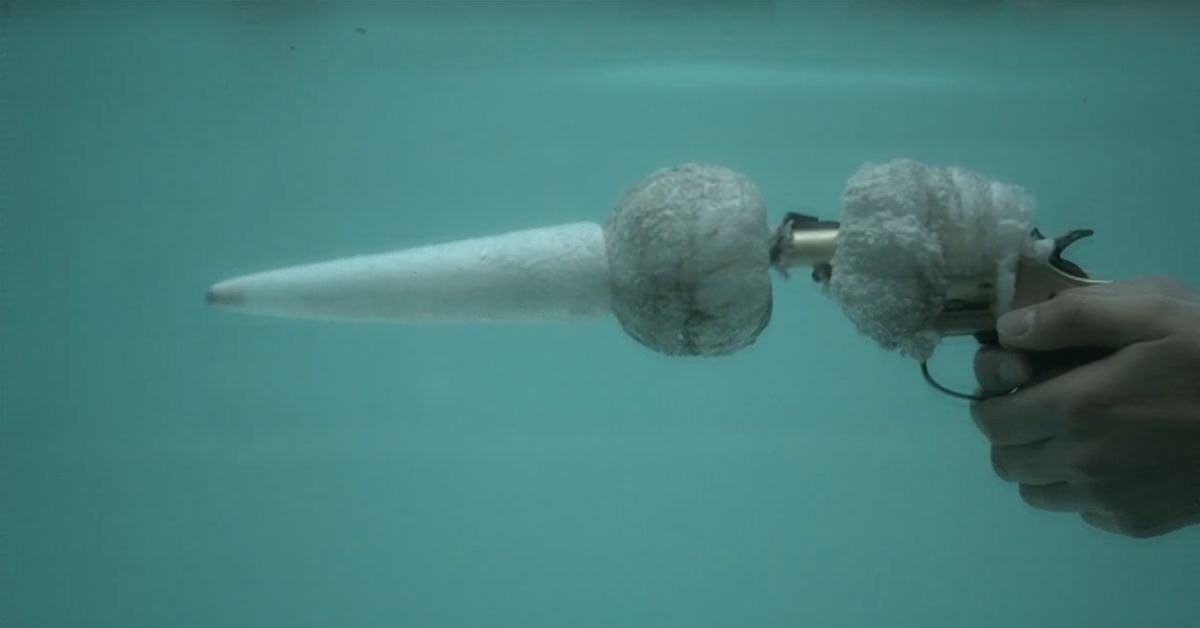 source
source
This is the disappointing result you?d get shooting a regular handgun underwater. Lethality extends to about three yards, beyond which it?s a pea shooter. The SPP-1 avoided mechanical problems inherent to anything made of metal with moving parts designed to be immersed in salt water by having four independent barrels, with one pre-loaded round in each.
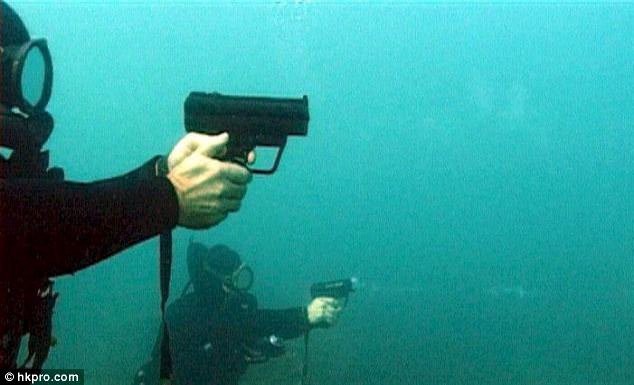 source
source
The HK P-11 is the modern equivalent, but with five barrels instead of four. All of the weapons here have a maximum effective range of about 100 feet, which is the average open ocean visibility on the continental shelf anyways. Interestingly, the non-rifled barrel that makes them accurate in the water (the bullets kept on a straight trajectory by hydrodynamic forces) make them terribly inaccurate out of water.
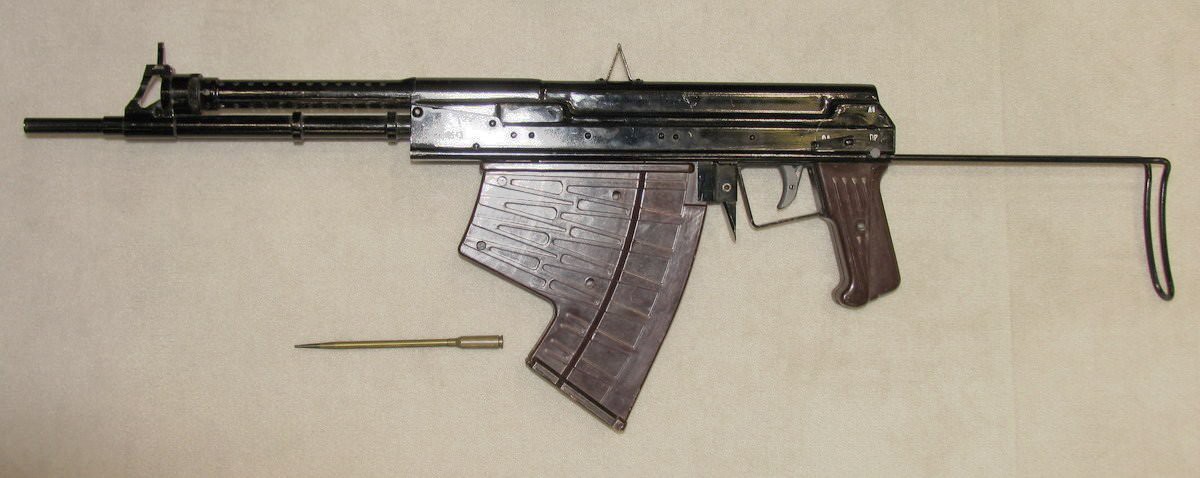 source
source
The Soviet APS underwater assault rifle represents the Russian side of the equation. An honest to god working underwater machinegun. Now you?ve seen it all and can die a happy man, perhaps due to being shot underwater by the APS, which stands for Avtomat Podvodny Spetsialnyy, or ?Special Underwater Assault Rifle?.
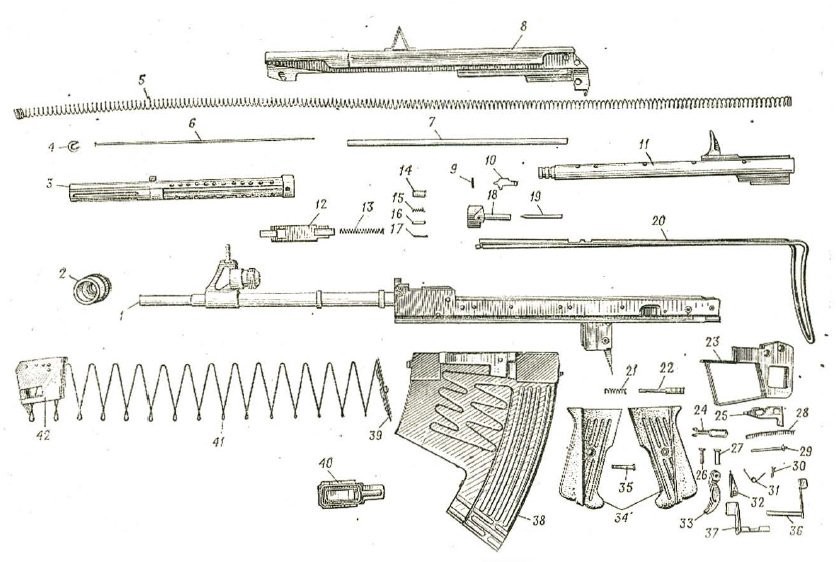 source
source
Not much differs save for the ammunition and smooth bore, but as you can imagine it presented a unique set of maintenance problems given how poor a mix metal machinery with complex moving parts and ocean water are. The cold war inspired even crazier innovations than this, however.
 source
source
International politics have to get pretty fucked for governments to start asking questions like ?what if we need infantry to be able to shoot at one another underwater?? But as ever, engineers made good on the demands of their deep-pocketed masters, and underwater rifles became a reality.
 source
source
What I like best about these is the alt-history aesthetic. Some of these could have been props from Logan?s Run or Blade Runner, like this Mk 1. Mod 0 underwater defense pistol developed for the navy. The need for divers to defend maritime assets hasn?t diminished since the cold war, but rather increased if anything.
 source
source
Recent entries in this field, like the Tula ADS amphibious assault rifle, have solved the air/water problem. Now the same rifle can alternate between two ammunition types, firing equally well underwater or on land. While tensions with Russia tapered following the collapse of the USSR, we are now industrially exploiting the ocean on a scale undreamt of during the cold war.
With deep sea mines, military bases and conshelf maricultural farming operations springing up, there?s more US assets offshore now than at any prior point in history. Defending those assets falls within the duties of the Navy, and as such they?ll continue to have a need for specialized underwater/amphibious weapons.
Who knows what the future holds? In all likelihood there?s a great deal more along these lines that we won?t even find out about for decades.
Citations:
http://www.thefirearmblog.com/blog/2013/10/28/tula-ads-underwater-rifle-closer/https://en.wikipedia.org/wiki/APS_underwater_riflehttps://en.wikipedia.org/wiki/Mk_1_Underwater_Defense_Gunhttps://en.wikipedia.org/wiki/SPP-1_underwater_pistolhttps://en.wikipedia.org/wiki/Heckler_%26_Koch_P11
Follow me for more like this!

